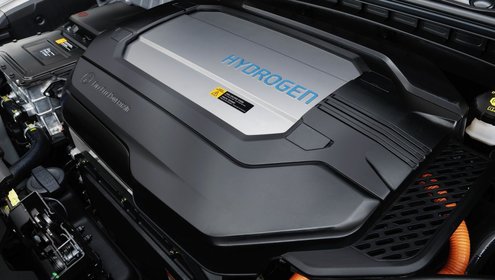
17/12/2021
Electricity will not be the sole power in the future
Simonluca Pini - Contributor Editor de Il Sole 24 Ore
Production of petrol and diesel to stop from 2035, not only electric cars but also hydrogen and biofuels
ICE units have been given an expiry date, 2035. By that date, in fact, petrol and diesel cars will no longer be sold in Europe. During the fourth meeting held by the Inter-Ministerial Committee for Ecological Transition, the ministers of Ecological Transition Roberto Cingolani, of Sustainable Infrastructure and Mobility Enrico Giovannini and of Economic Development Giancarlo Giorgetti defined "the timing for the replacement of ICE vehicles. In line with the most advanced countries, the phase-out of new cars with internal combustion engines will have to take place by 2035, while vans and light commercial transport vehicles were granted an extra 5 years until 2040". As explained by the Ministry of Ecologic Transition, "it is necessary to implement all possible solutions in a logic of 'carbon neutrality', enhancing, therefore, not only the value of electric vehicles but also the potential expressed by hydrogen, as well as recognizing, the essential role played by biofuels, with Italy presently engaged in creating a modern and advanced domestic supply chain".
Bio Diesel
Clearly, then, electric cars will by no means be the only vehicles used from 2035. This leaves room also for hydrogen-powered models as well as e-fuel and biofuels. Biodiesel, for example, will be able to significantly reduce the carbon footprint of diesel models, newly designed and compatible with this type of fuel. This means that a diesel-powered car would see a 70 to 95% reduction of carbon dioxide emissions when using "bio" diesel. Among the “green” fuels on the way, we find Hvo (Hydrotreated vegetable oil) produced from biological residues and waste materials: these are oils converted into hydrocarbons by reaction with hydrogen and added to diesel in various quantities or to be used entirely as fuels maximizing the benefits in terms of lower emissions.
Hydrogen
If biofuels are going to be valuable allies in the fight against CO2 emissions, the transition phase between now and 2035, will see hydrogen-powered fuel cell technology become a viable alternative to current fossil-fuels powered vehicles. Several automotive groups are working to create hydrogen-powered vehicles capable of generous mileage and fast refuelling times, almost the same as current ICE vehicles which makes the transition from fossil fuel to hydrogen easy as far as the daily use of a vehicle. Of course, if this solution aims at becoming a viable proposition for motorists in the future, the growth of a hydrogen-powered fleet will have to go hand in hand with the creation of an adequate infrastructure, becoming a real alternative to the lack of electric charging stations in many places.
Alternative to electric
The need to offer alternative technologies is also based on the issues imposed by the transition towards zero-emission mobility. As highlighted in the new EY Electric Vehicle Country Readiness Index, Italy is still lagging in terms of electric mobility. The EY Index, which represents 75% of the global light vehicle market, evaluates three main indicators such as supply, demand and regulation in force in the countries examined, with the aim of providing a comprehensive overview for each nation about the current maturity and readiness for a future electric and sustainable mobility. Currently Italy ranks in 9th place in the EY Index preceding India in the top ten positions, showing a widespread immaturity compared to what is happening in other leading countries, where an industrial supply chain already exists and has already reached an advanced stage of conversion to electricity, supplying this growing market with adequate infrastructure. Italy, as an importer of electricity with a supply deficit of -6.9%, must face the challenge of lower network and utility’s reliability and focus on the expansion of charging infrastructure. If we consider that in 2020 the ratio of chargers to electric vehicles was 0.13 in Italy, on par with the global average of 0.1, it is clear that the number of fast chargers installed are a small percentage of the total, representing only 3.3%.
Bio Diesel
Clearly, then, electric cars will by no means be the only vehicles used from 2035. This leaves room also for hydrogen-powered models as well as e-fuel and biofuels. Biodiesel, for example, will be able to significantly reduce the carbon footprint of diesel models, newly designed and compatible with this type of fuel. This means that a diesel-powered car would see a 70 to 95% reduction of carbon dioxide emissions when using "bio" diesel. Among the “green” fuels on the way, we find Hvo (Hydrotreated vegetable oil) produced from biological residues and waste materials: these are oils converted into hydrocarbons by reaction with hydrogen and added to diesel in various quantities or to be used entirely as fuels maximizing the benefits in terms of lower emissions.
Hydrogen
If biofuels are going to be valuable allies in the fight against CO2 emissions, the transition phase between now and 2035, will see hydrogen-powered fuel cell technology become a viable alternative to current fossil-fuels powered vehicles. Several automotive groups are working to create hydrogen-powered vehicles capable of generous mileage and fast refuelling times, almost the same as current ICE vehicles which makes the transition from fossil fuel to hydrogen easy as far as the daily use of a vehicle. Of course, if this solution aims at becoming a viable proposition for motorists in the future, the growth of a hydrogen-powered fleet will have to go hand in hand with the creation of an adequate infrastructure, becoming a real alternative to the lack of electric charging stations in many places.
Alternative to electric
The need to offer alternative technologies is also based on the issues imposed by the transition towards zero-emission mobility. As highlighted in the new EY Electric Vehicle Country Readiness Index, Italy is still lagging in terms of electric mobility. The EY Index, which represents 75% of the global light vehicle market, evaluates three main indicators such as supply, demand and regulation in force in the countries examined, with the aim of providing a comprehensive overview for each nation about the current maturity and readiness for a future electric and sustainable mobility. Currently Italy ranks in 9th place in the EY Index preceding India in the top ten positions, showing a widespread immaturity compared to what is happening in other leading countries, where an industrial supply chain already exists and has already reached an advanced stage of conversion to electricity, supplying this growing market with adequate infrastructure. Italy, as an importer of electricity with a supply deficit of -6.9%, must face the challenge of lower network and utility’s reliability and focus on the expansion of charging infrastructure. If we consider that in 2020 the ratio of chargers to electric vehicles was 0.13 in Italy, on par with the global average of 0.1, it is clear that the number of fast chargers installed are a small percentage of the total, representing only 3.3%.






